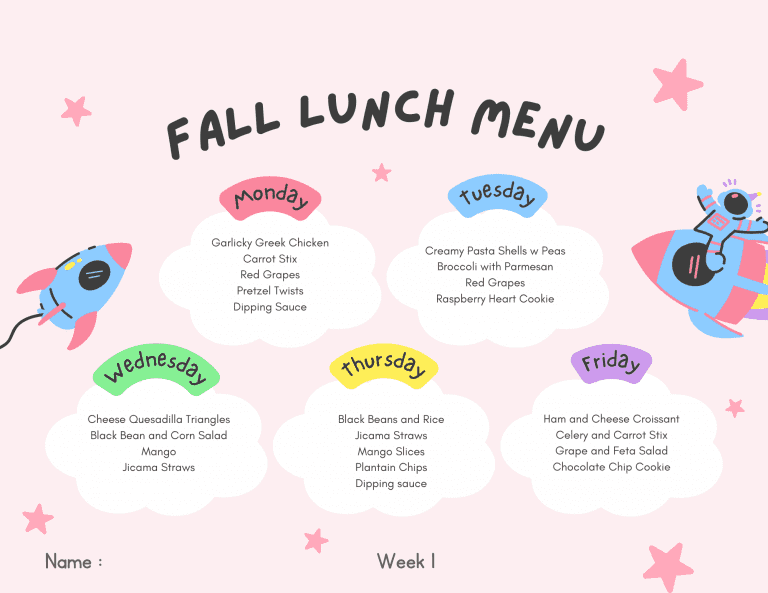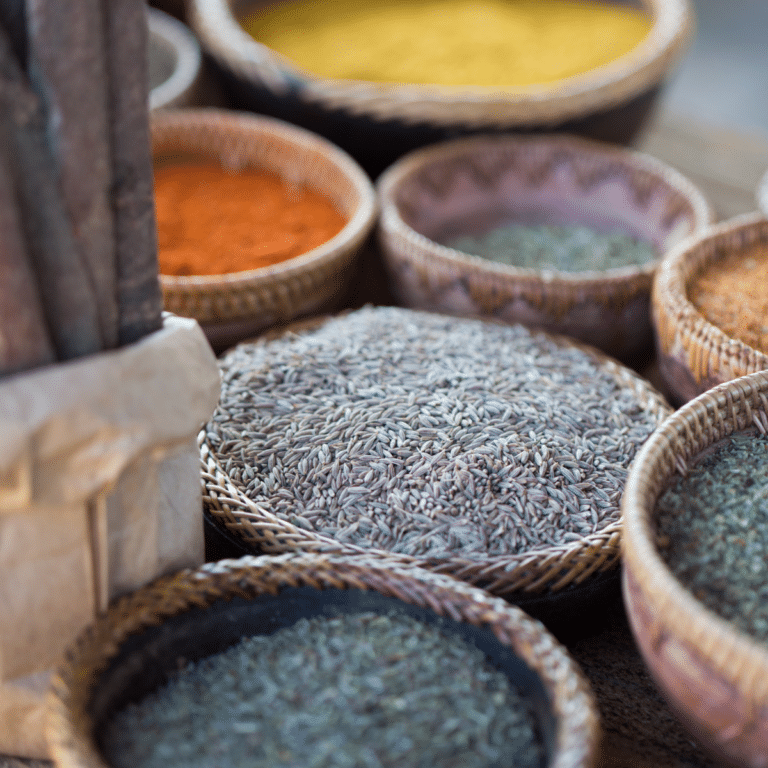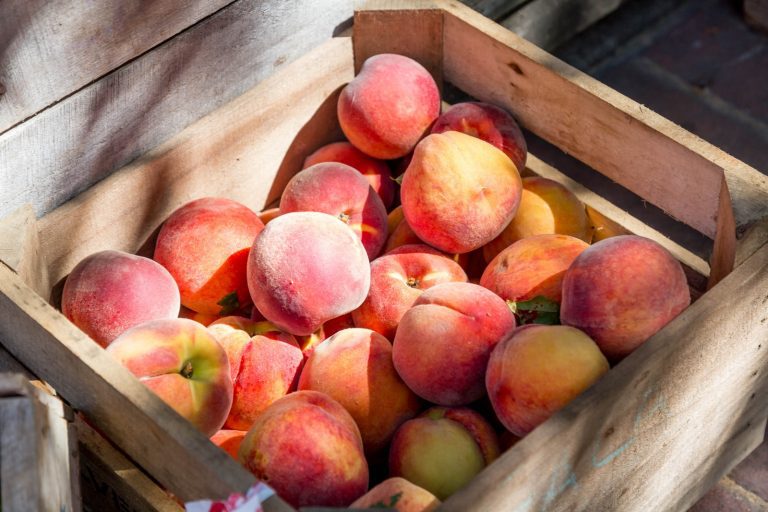If you have recently started taking Mounjaro® (tirzepatide), a once-weekly prescription medication, that is used with diet and exercise to help people with type 2 diabetes lower their Hemoglobin A1C, you may be looking for a Mounjaro diet and meal plan. Eating a well-balanced diet is an important part of a healthy lifestyle.
What is Mounjaro®?
Tirzepatide, sold under the brand name Mounjaro, is an antidiabetic medication and can be part of a treatment plan for type 2 diabetes and has been prescribed off-label by physicians to help with weight management. To determine if this medication might be right for you, talk to your healthcare provider.
How Does Mounjaro Work?
Your body naturally produces an appetite hormone known as glucagon-like peptide-1 (GLP-1) that helps to regulate your hunger. Specifically, Mounjaro is a type of drug called a dual glucose-dependent insulinotropic polypeptide (GIP) and glucagon-like peptide-1 (GLP-1) receptor agonist. Mounjaro® works like GLP-1 by regulating your appetite, which can lead to eating fewer calories and losing weight.
Disclaimer: This should not be taken as medical advice. This is my opinion as a registered dietitian nutritionist.
What To Eat While Taking Mounjaro?
This may be a question you are having difficulty answering because of all of the previous diet information that you have used on your weight loss journey in the past. Mounjaro can be an effective tool, when There are a few things that should be focused on when planning your meals:
Hydration:
Aim to drink at least 64 oz of zero-calorie and non-caffeinated beverages per day. To help you meet that goal, carry a water bottle around with you during the day, and track how much you drink.
Lean Proteins:
While on Mounjaro, your appetite will be lower, YAY! However, because of your decreased appetite, the quality of food that you eat is that much more important. I suggest eating protein first because the body cannot store amino acids, you need to replenish them regularly.
Proteins are made up of a combination of molecules called amino acids — your body needs 20 different amino acids to function correctly. It can produce 11 of them, but it must get the final nine — called essential amino acids — from the protein you eat.
The amount of protein to eat at each meal isn’t the same for everyone. In general, a good general rule of thumb is to aim for about 25 to 30 grams per meal and at least 8-10 grams per snack. Here is a list of high-protein snacks for some ideas. Visit a registered dietitian to determine your individual protein needs.
Complete proteins contain all nine essential amino acids. To summarize, the following foods contain complete proteins:
Beef
Turkey
Chicken
Fish
Eggs
Dairy
Soy
Buckwheat
Hempseed
Quinoa
If you’re a vegetarian or vegan, or if you want to limit the amount of animal products you consume, you can combine incomplete, plant-based proteins to meet your body’s needs.
Combinations include:
Nuts or seeds with whole grains (peanut butter on whole wheat toast)
Whole grains with beans (beans and brown rice; hummus and whole wheat pita bread; bean-based chili and crackers; refried beans and tortillas)
Beans with nuts or seeds (salad with chickpeas and sunflower seeds)
Look for easy ways to add or substitute complete proteins into what you already eat. Switch rice for quinoa, include edamame in salads, or add chia seeds and Greek yogurt to smoothies.
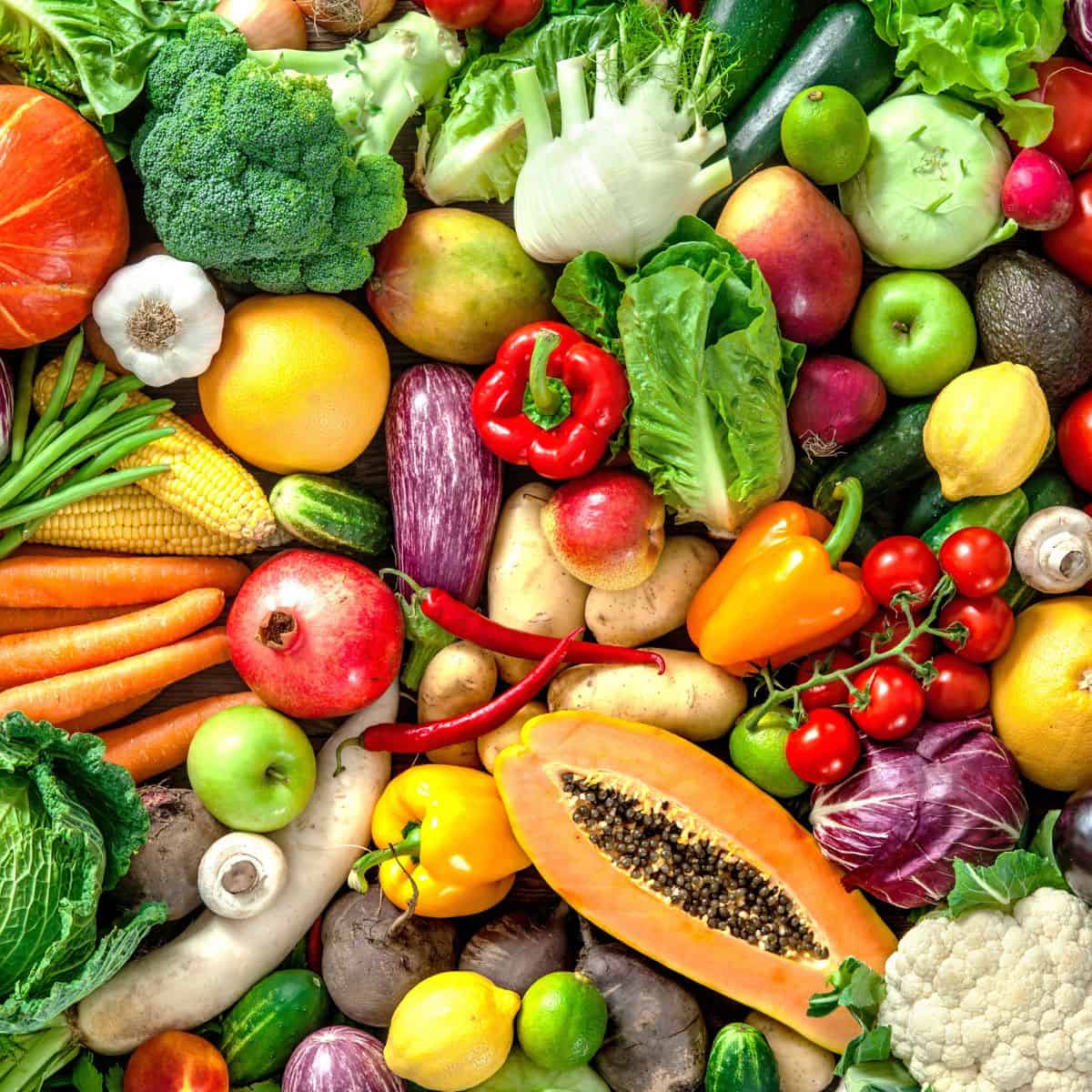
Whole Foods
After protein, adding whole foods like non-starchy vegetables will help round out your meals.
complex carbohydrates (fruit, legumes, whole grains) aim for 25-30 grams of fiber per day
Whole Grains A grain is considered to be a whole grain as long as all three original parts — the bran, germ, and endosperm — are still present in the same proportions as when the grain was growing in the fields.
LIST OF WHOLE GRAINS
The following, when consumed in a form including the bran, germ and endosperm, are examples of generally accepted whole grain foods and flours.
- Amaranth
- Barley
- Buckwheat
- Corn, including whole cornmeal and popcorn
- Millet
- Oats, including oatmeal
- Quinoa
- Rice, both brown rice and colored rice
- Rye
- Sorghum (also called milo)
- Teff
- Triticale
- Wheat, including varieties such as spelt, emmer, farro, einkorn, Kamut®, durum and forms such as bulgur, cracked wheat and wheatberries
- Wild rice
Non-Starchy Vegetables
Eat more! You don’t often hear that when you have diabetes, but non-starchy vegetables are one food group where you can satisfy your appetite. Additionally, non-starchy vegetables are unlikely to cause unwanted side effects and can actually help alleviate some like constipation.
Vegetables are full of vitamins, minerals, fiber and phytochemicals—and with so few calories and carbohydrate, everyone can enjoy more!
There are two main types of vegetables—starchy and non-starchy. For this section, we are going to focus only on the non-starchy vegetables.
Choosing non-starchy vegetables
Choose fresh, frozen and canned vegetables and vegetable juices without added sodium, fat or sugar.
- If using canned or frozen vegetables, look for ones that say no salt added on the label.
- As a general rule, frozen or canned vegetables in sauces are higher in both fat and sodium.
- If using canned vegetables with sodium, drain the vegetables and rinse with water to decrease how much sodium is left on the vegetables.
For good health, try to eat at least three to five servings of vegetables a day. This is a minimum and more is better! A serving of vegetables is:
- ½ cup of cooked vegetables
- 1 cup of raw vegetables
Non-starchy vegetables
The following is a list of common non-starchy vegetables:
- Amaranth or Chinese spinach
- Artichoke
- Artichoke hearts
- Asparagus
- Baby corn
- Bamboo shoots
- Beans (green, wax, Italian)
- Bean sprouts
- Beets
- Brussels sprouts
- Broccoli
- Cabbage (green, bok choy, Chinese)
- Carrots
- Cauliflower
- Celery
- Chayote
- Cucumber
- Daikon
- Eggplant
- Greens (collard, kale, mustard, turnip)
- Hearts of palm
- Jicama
- Kohlrabi
- Leeks
- Mushrooms
- Okra
- Onions
- Pea pods
- Peppers
- Radishes
- Rutabaga
- Salad greens (chicory, endive, escarole, lettuce, romaine, spinach, arugula, radicchio, watercress)
- Sprouts
- Squash (cushaw, summer, crookneck, spaghetti, zucchini)
- Sugar snap peas
- Swiss chard
- Tomato
- Turnips
- Water chestnuts
- Yard-long beans
Healthy Fats
Fat is an important part of your diet, but some kinds are healthier than others. Find out which to choose and which to avoid.
Monounsaturated fats in food
Monounsaturated fats are found in many foods, including red meats and dairy products. About half the fats in these foods are saturated and half monounsaturated.
Many plants and plant oils are high in monounsaturated fats but low in saturated fats. These include:
- Oils from olives, peanuts, canola seeds, safflower seeds, and sunflower seeds.
- Avocados.
- Pumpkin seeds.
- Sesame seeds.
- Almonds.
- Cashews.
- Peanuts and peanut butter.
- Pecans.
Monounsaturated fats from plants may lower bad cholesterol and raise good cholesterol. They also may improve the control of blood sugar levels.
Replacing saturated fats with monounsaturated fats in the diet may lower the level of bad cholesterol and triglycerides in the blood. Triglycerides are fat cells that circulate in the bloodstream and are stored in the body’s fat cells. A high level of triglycerides in the blood increases the risk of diseases of the heart and blood vessels.
Eating plant foods high in monounsaturated fats, particularly extra virgin olive oil and tree nuts, may benefit heart health and blood sugar regulation.
Polyunsaturated fats in food
The two categories of polyunsaturated fats are omega-6 fatty acids and omega-3 fatty acids.
Omega-6. Sources of omega-6 fatty acids include:
- Corn oil.
- Cottonseed oil.
- Peanut oil.
- Soybean oil.
- Sunflower oil.
Benefits of a diet high in omega-6 fatty acids, especially when they replace saturated fats, may be linked to:
- Lower bad cholesterol.
- Lower triglycerides.
- Higher good cholesterol.
- Better blood sugar control.
Omega-3. Sources of omega-3 fatty acids include oily fish, seeds and nuts:
- Fish such as salmon, anchovies, mackerel, herring, sardines and tuna.
- Oils from canola seeds, soybeans, walnuts and flaxseed.
- Soybeans.
- Chia seeds.
- Flaxseed.
- Walnuts.
Diets high in omega-3 fatty acids may have health benefits, including:
- Lowering levels of triglycerides in the blood.
- Lowering the risk of heart and blood vessel diseases.
Try these tips to reduce unhealthy fat in your diet:
- Use plant-based oils instead of butter or lard. For example, saute vegetables with olive oil instead of butter. Use canola oil for hot cooking, such as searing or stir-frying.
- Add fish to your diet, especially oily fish.
- Choose lean meat and skinless poultry. Trim visible fat from meat. Remove fat and skin from poultry.
- Eat and drink low-fat dairy products.
- Reach for whole fruits and vegetables when you’re hungry.
- Limit processed foods, which often contain saturated fat.
- Check labels on low-fat or fat-free processed food, which may have lots of added sugars and sodium (salt).
Potential Side Effects
Most Common Side Effects and How to Minimize Them
Mounjaro can have some major side effects, especially when you first start taking the medication.
The following are common side effects that may range from mild to moderate to severe:
Nausea
Vomiting
Diarrhea
Bloating
Gas
Stomach pain
Constipation
Weight loss
Rapid heart rate
Although rare, more serious side effects may include:
Thyroid tumors, including cancer
Pancreatitis
Gallbladder disease
Low blood sugar levels, if you take insulin
Serious allergic reactions
After starting Mounjaro, it’s normal to experience mild to moderate side effects—especially during the first few weeks.
You can ask your doctor to lower your dose or find an alternative medication
Talk to your doctor if the side effects you’re experiencing are severe enough to disrupt your daily life.
If you cannot go to school, work, or conduct normal activities, your doctor may suggest either weaning your dose or finding you an alternative medication
Stay hydrated and keep blood sugars within a healthy range
If you’re struggling with nausea, vomiting, and diarrhea, make sure that you’re staying hydrated by drinking plenty of water and getting electrolytes.
Being dehydrated increases the risk of diabetic ketoacidosis (DKA), which can be fatal if not treated quickly.
Test your blood sugar often to make sure that your blood sugar levels are staying within a healthy range.
Continue to take all other diabetes medications as prescribed.
Seek medical attention immediately if you’re so nauseous that you’re not able to keep down food or drink. Untreated low blood sugar can be extremely dangerous, especially if you take insulin.
What Not To Eat While Taking Mounjaro
In general, avoiding the following types of foods will help minimize side effects while taking Mounjaro:
Foods and beverages with added sugar
Eating and drinking foods and beverages with added sugar isn’t great for anyone, let alone people with diabetes trying to manage their blood sugar levels.
These processed foods and drinks make diabetes management more difficult, increase insulin resistance, and make Mounjaro less effective.
Refined carbohydrates with added sugars found in foods like ice cream, candy, desserts, and soda also make losing weight harder.
Overly-fatty, fried, or greasy foods
High-fat foods, like fried, fatty, and greasy fast food are full of saturated fats.
These foods are associated with the development of heart disease, chronic inflammation, high blood pressure, and insulin resistance.
Additionally, these types of foods cause bloating, gas, and nausea.
Many people who take Mounjaro will be sensitive to high-fat meals—especially when they first begin to take the medication.
Too much alcohol
Both Mounjaro and alcohol increase the risk of low blood sugar, especially if you’re on insulin.
This can be dangerous if you are a person living with diabetes— especially if you suffer from hypo-unawareness.
People with a history of alcohol abuse or alcoholism may also be counseled to be cautious when taking Mounjaro, as pancreatic inflammation may occur.
Talk with your doctor if you’re struggling with alcohol addiction or if you experience any side effects while taking Mounjaro and drinking alcohol.

Be extra aware of your blood sugars if you take Mounjaro and drink alcohol regularly.
Sample 1-Day Mounjaro Meal Plan
Below you will see a sample one day meal plan while on Mounjaro that includes the time of day and type of food.
7:00 AM Breakfast
Scrambled Eggs, Black Beans, Corn, Cheese and Corn Tortilla
Avocado
Tangerine
10:00 AM Snack
Cheerios with Milk
Banana
Noon Lunch
Chicken, Mushrooms, and Pita
3:00 PM Snack
Apple and Peanut Butter
6:00 PM Dinner
Salmon with Lemon
Couscous
Asparagus
Roasted Brussel Sprouts
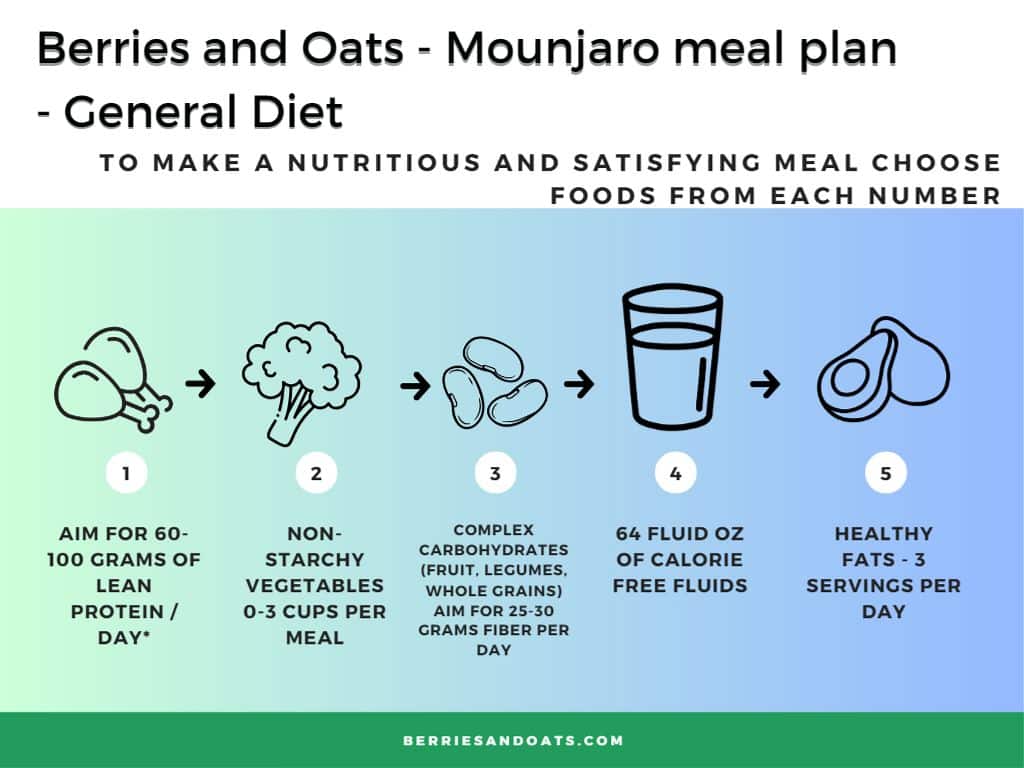
General Guidance
Stick to bland foods in the beginning
Manage nausea by sticking to bland foods such as toast, rice, bananas, and applesauce.
Drink plenty of clear liquids, such as warm soups and broths.
Eat smaller, more frequent meals
You may also find it helpful to eat smaller, more frequent meals. Stop eating once you are full, even if you seem to be eating less than normal.
Opt for over-the-counter medications
You can also take over-the-counter nausea medication such as Dramamine or get a prescription for Zofran until your side effects subside.
However, some of the side effects of the medication can be exacerbated by the foods we eat.
People often aren’t sure what foods to avoid and what foods to eat if they take Mounjaro.
There are no foods that are “forbidden” for people who take Mounjaro.
However, some foods may exacerbate adverse side effects, such as worsening nausea, diarrhea, or vomiting.
Foods that are filled with sugar or refined carbohydrates can cause increased insulin resistance, which can make the medication not as effective.
One of the benefits of Mounjaro is that it supports healthy blood sugars when it’s combined with a healthy diet and physical activity.
Avoiding or limiting certain foods may be helpful to both avoid adverse side effects and boost the efficacy of the medication.
It’s always a good idea to talk with your doctor before making dietary changes.
MOUNJARO DIET PLAN SUPPORT
If you are looking for support and answers to your questions and would like access to a registered dietitian, join our private Facebook page at Wegovy / Ozempic Meal Plans and Recipes.

